New Orleans, NYC and the ground between
As promised in my previous post from the train to a conference in New Orleans, I’m back with photos of food, musicians, and some thoughts about the connection between Katrina and Sandy.
The conference was held in Harrah’s–the casino chain with hotels in many of the cities that permit gambling. (Aside: The notion of spending a vacation week in the casino environment is a bafflement to me. Oh sure, a few hours to just play around with an allowance you permit yourself to lose…that I can understand. These casinos are a combination of NOISE, FLASHING LIGHTS AND SMOKE, and over-spending.)
This is the second time I’ve been to a casino hotel for a public radio conference (the last time was in Reno…in the middle of the summer). The reason is simple: they’re cheap and they have the capacity to house hundreds of participants and to provide multiple meeting spaces.
New Orleans is such an extraordinary city it really doesn’t matter much where you stay–the action is all outside your hotel (unlike Reno). What little free time I had I wanted to spend on the streets and in the music clubs.
On the last evening I was in town, I had an opportunity to eat at a great diner on Frenchmen Street (which is where you go to hear music if you want to get away from the Bourbon Street boobs-for-beads scene). I was there with Mike Riksen from NPR–his job is to carry the message about the work we do to the offices of our congressional representatives. Also there, John Stark, general manager at the Flagstaff, Arizona station. (For long-time listeners, Mitch Teich, our former reporter, moved to this station when he left the north country). And, Paul Westhelle, the executive director at Jefferson Public Radio in Oregon. These were my compadres for dinner and a cruise around the clubs of Frenchmen Street. Here are a few photos from our evening in the Quarter:
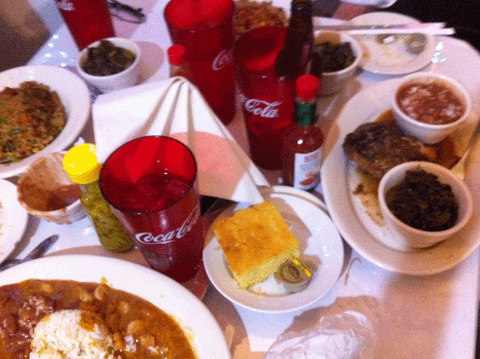
Corner diner food a la NOLA: shrimp etouffe, corn bread, greens and beans, jambalaya, hot sauce, iced tea and beer.
Then, music! We heard all of these bands in clubs or outside along one block of Frenchman Street–in two hours. And there was lots more.
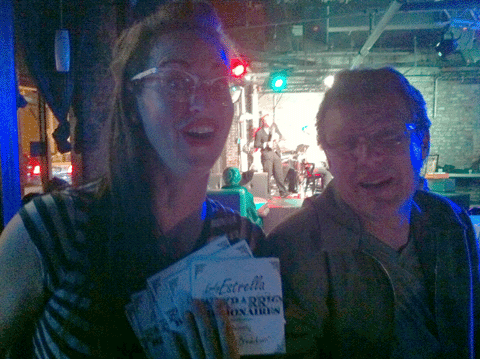
Emily, lead singer for Emily Estrella & the FauxBarrio Billionaires, sells us a cd (that’s Paul from Jefferson Public Radio).
Check out Emily and the boys, here.
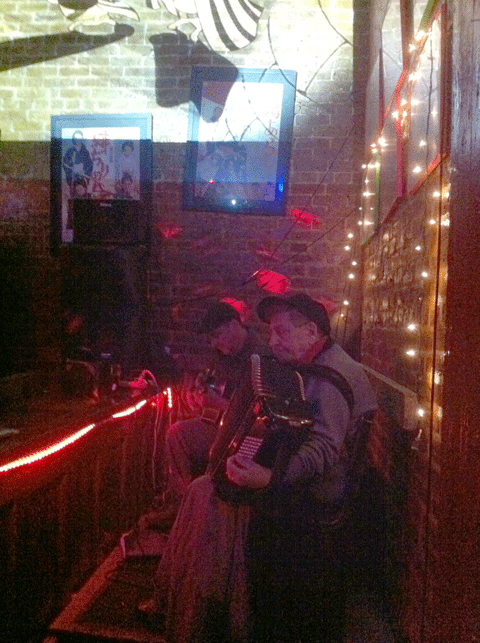
Only in New Orleans: a blind French accordion player, with a Django-like guitarist, playing in Yuki, a Japanese bar. (These guys were my hands-down favorite…will track down a link to them and share with you soon.)
These two great acts appearing across the street from d.b.a. at the Spotted Cat Music Club:
Time to head north.
I caught my train home the next morning. Across the aisle from me were a couple from New Jersey whose home had been damaged but not destroyed by Sandy. They’d gone to New Orleans to visit friends and to step away from the destruction for a few days before launching into the repair work to their home and neighborhood. In the seats behind me, an older New Orleans native and her middle-aged niece, traveling to visit family in North Carolina. We talked about the experience of Katrina vs. Sandy.
This conversation dovetailed with an email I received from Ottawa stringer, Lucy Martin, who asked:
“What are folks in [New Orleans] saying/thinking about the contrast between Katrina and Sandy?
As the focus is on NYC & NJ, with promises things will be fixed… is there some sense that the urban east coast gets more attention and disaster relief than a poor southern city did/does? Does New Orleans feel forgotten and abandoned?”
I talked with people on the train who had felt the brunt of either Katrina or Sandy, and in New Orleans I had quick chats with hotel staff, musicians and restaurant workers, as well as public radio people from both NYC and New Orleans. I am no expert in terms of answering Lucy’s questions, but here are some of the comments I took away (roughly paraphrased):
“We’re from New Jersey and we were so impressed with the effort mounted across NY and NJ by the utility companies–they brought people in from across the country to help. An event of this size causes damage that it just takes time to repair–everyone can’t expect to get power back right away.” (Here I remembered three weeks without power at my home and almost that long at the station during the ice storm of ’98.)
“In New Orleans we just know what those folks up north are going through. We don’t really think about who’s getting more or less.”
“New Orleans musicians have organized at least one benefit concert to aid the recovery effort in New York City.”
I didn’t hear any bitterness or anger from New Orleans residents who had gone through Katrina. I heard empathy. And, I heard about the need for preventive measures–in both locations.
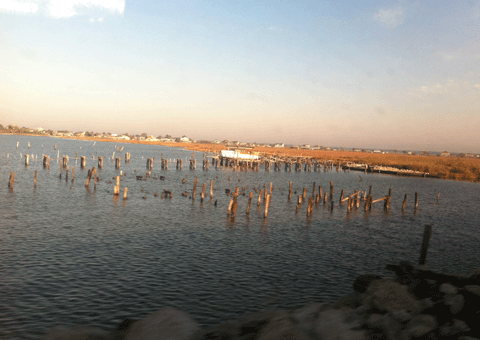
Crossing the Lake Pontchartrain causeway…these houses are really in the middle of the water on a narrow peninsula.
On the train ride home, I was thinking about the looming threat to so many of our coastal cities and communities. Are “preventive” measures possible? How can we continue to build or re-build at the edge of a rising ocean? And yet, we do. I snapped a photograph of newer homes built on a finger of land reaching into Lake Pontchartrain as we crossed the causeway.
My big takeaway–in the aftermath of events like Katrina and Sandy–is that we may still be in denial about risk in our own country. We hear reports of Pacific island nations worrying about losing the very ground they stand on and we don’t think New York or New Orleans or any other sea level locations in North America face the same threat. Check out the website for RISE, a media project focusing on the impact of rising oceans; NCPR hopes to air a three-part series from Rise in the near future.
In tomorrow’s post, a report on the public media issues we covered at the conference.
Tags: climate change, french quarter, hurricanes, new orleans





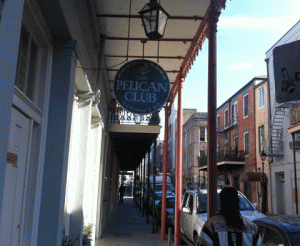
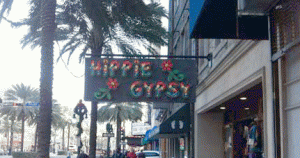
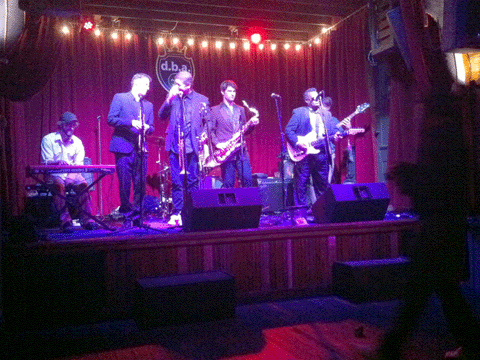

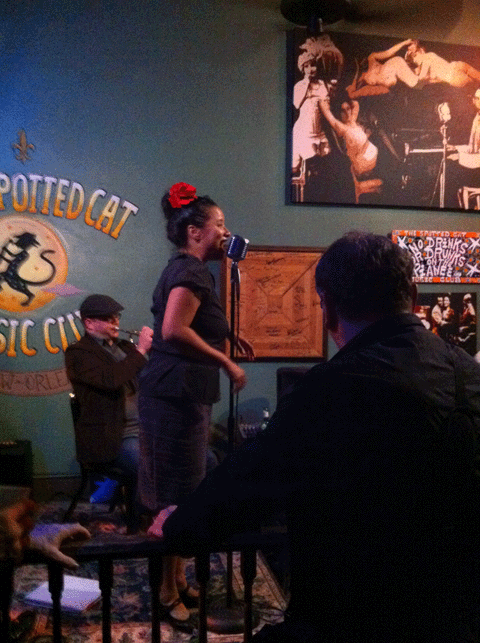




Thanks Ellen!
Looks like you had a good time.
And ate well. Yum.
What a generous spirit your New Orleans contacts displayed.
I am glad to hear you witnessed empathy, not bitterness.
As for getting ahead of potential risks … I’m grateful public media furthers constructive conversations in that regard.